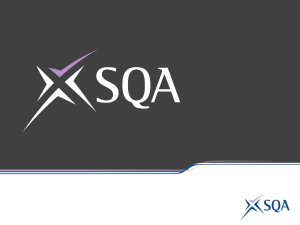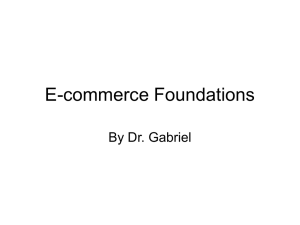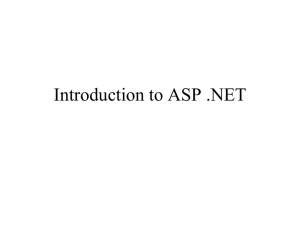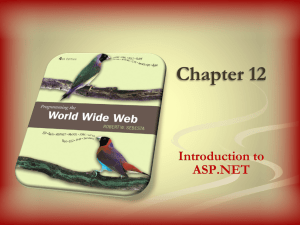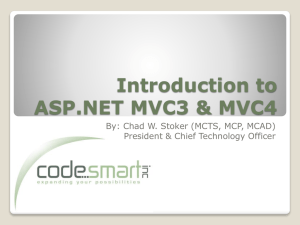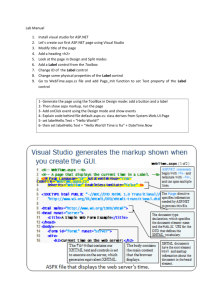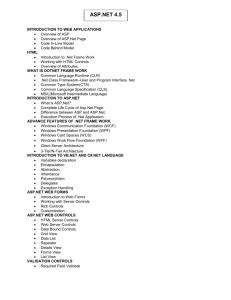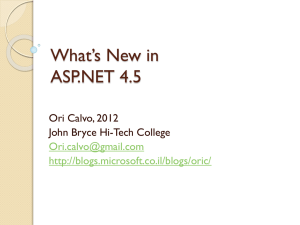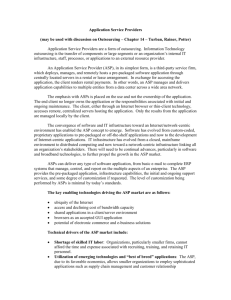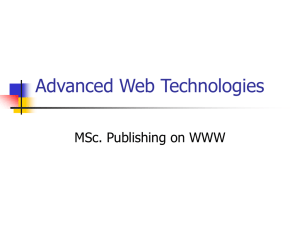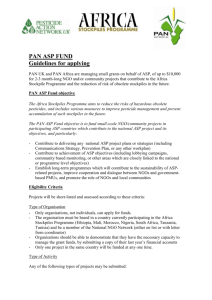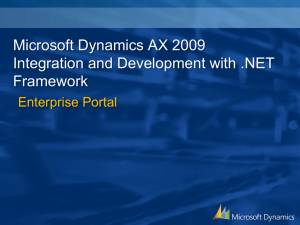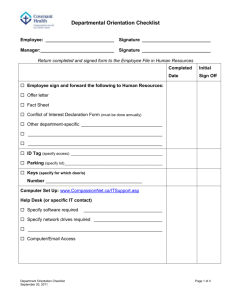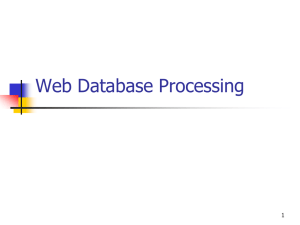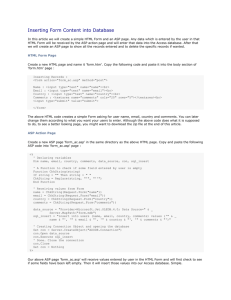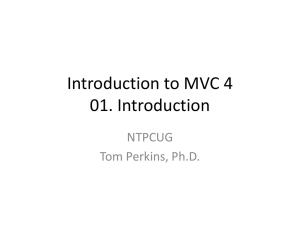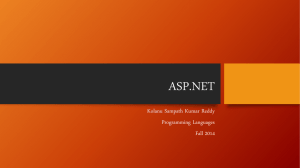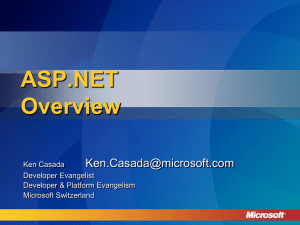asp.net
advertisement
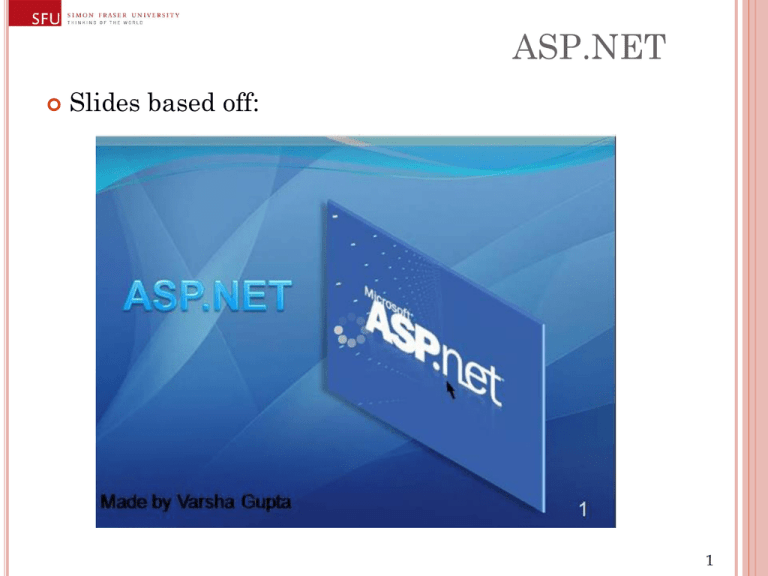
ASP.NET Slides based off: 1 BACKGROUND - WEB ARCHITECTURE Client PC/Mac/Unix/... + Browser Request: http://www.digimon.com/default.asp Network HTTP, TCP/IP Response: <html>….</html> Server Web Server 2 ASP.NET OVERVIEW ASP.NET provides services to allow the creation, deployment, and execution of Web Applications and Web Services Like ASP, ASP.NET is a server-side technology Web Applications are built using Web Forms Web Forms are designed to make web-based applications as easy as building Visual Basic applications Web Form = Visual Drag and Drop tools 3 ASP.NET OVERVIEW Simple: less code, easier to create and maintain Multiple, compiled languages Fast Scalable Manageable Customizable and extensible Secure Tool support (Visual Studio.NET) 4 ASP.NET OVERVIEW ARCHITECTURE VB C++ C# JScript … ASP.NET: Web Services and Web Forms Windows Forms ADO.NET: Data and XML Base Classes Visual Studio.NET Common Language Specification Common Language Runtime 5 PROGRAMMING MODEL Your ASPX Web Interface Your C# Code Button code ... Button List List code ... Text Text code ... Browser ASP.NET Event handlers 6 PROGRAMMING MODEL A postback occurs when a page generates an HTML form whose values are posted back to the same page A common technique for handling form data In ASP and other server-side technologies the state of the page is lost upon postback... Unless you explicitly write code to maintain state This is tedious, bulky and error-prone 7 PROGRAMMING MODEL By default, ASP.NET maintains the state of all server-side controls during a postback Must use method="post“ (in the HTML Form, method=“get”) Server-side control objects are automatically populated during postback No state stored on server Works with all browsers 8 PROGRAMMING MODEL Multiple sources of controls Built-in (~ 50 built in!) 3rd party User-defined Controls range in complexity and power: button, text, drop down, calendar, data grid, ad rotator, validation Can be populated via data binding 9 PROGRAMMING MODEL Two styles of creating ASP.NET pages Controls and code in .aspx file Controls in .aspx file, code in code-behind page Supported in Visual Studio.NET Code-behind pages allow you to separate the user interface design from the code Allows programmers and designers to work independently <%@ Codebehind=“WebForm1.cs” Inherits=WebApplication1.WebForm1” %> 10 PROGRAMMING MODEL Just edit the code and hit the page ASP.NET will automatically compile the code into an assembly Compiled code is cached in the CLR Subsequent page hits use compiled assembly If the text of the page changes then the code is recompiled Works just like ASP: edit, save and run 11 PROGRAMMING MODEL 12 PROGRAMMING BASICS The most basic page is just static text Any HTML page can be renamed .aspx Pages may contain: Directives: <%@ Page Language=“C#” %> Server controls: <asp:Button runat=“server”> Code blocks: <script runat=“server”>…</script> Data bind expressions: <%# %> Server side comments: <%-- --%> 13 PROGRAMMING BASICS Code can respond to page events e.g. Page_Load, Page_Unload Code can respond to control events Button1_Click Textbox1_Changed 14 Example: 15



